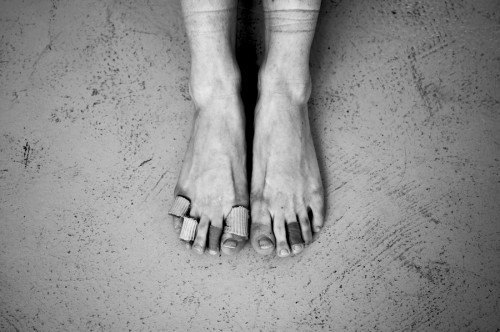15 comments
[…] Ballerinas wear ballet slippers called pointe shoes. During certain ballet moves, they balance on the tips of the toe of the shoe. These conditions may become so bothersome that ballerinas will attempt to cut off the affected areas of their feet with razors to get some relief. via […]
[…] Ballerinas wear ballet slippers called pointe shoes. During certain ballet moves, they balance on the tips of the toe of the shoe. These conditions may become so bothersome that ballerinas will attempt to cut off the affected areas of their feet with razors to get some relief. via […]
[…] Ballerinas wear ballet slippers called pointe shoes. During certain ballet moves, they balance on the tips of the toe of the shoe. These conditions may become so bothersome that ballerinas will attempt to cut off the affected areas of their feet with razors to get some relief. via […]
[…] Ballerina’s feet are subject to a plethora of injuries, including: Blisters and calluses. When dancing in pointe shoes that haven’t been properly broken in or are ill-fitting, blisters and calluses are common. Both conditions are caused by friction between the toes and movement. via […]
[…] Ballerinas wear ballet slippers called pointe shoes. During certain ballet moves, they balance on the tips of the toe of the shoe. These conditions may become so bothersome that ballerinas will attempt to cut off the affected areas of their feet with razors to get some relief. via […]
[…] During certain ballet moves, they balance on the tips of the toe of the shoe. Unfortunately, this puts all the ballerina's body weight on their toes, causing a host of foot problems including bunions, calluses, corns, and blisters. via […]
[…] Unfortunately, this puts all the ballerina's body weight on their toes, causing a host of foot problems including bunions, calluses, corns, and blisters. These conditions may become so bothersome that ballerinas will attempt to cut off the affected areas of their feet with razors to get some relief. via […]
[…] This condition creates a bony bump on the joint where the dancer's big toe meets her foot. This is a result of the tension on the joint of her big toe and the crowding of her toes inside the ballet slipper. Stress fractures. Overuse can create tiny cracks in the bones of the feet. via […]
[…] + Read More […]
[…] + Read More […]
[…] + Read More Here […]
[…] Unfortunately, this puts all the ballerina’s body weight on their toes, causing a host of foot pro… […]
[…] Why do Ballerinas Cut Their Feet with Razors? – Dr. Schoene […]
[…] Why do Ballerinas Cut Their Feet with Razors? […]

